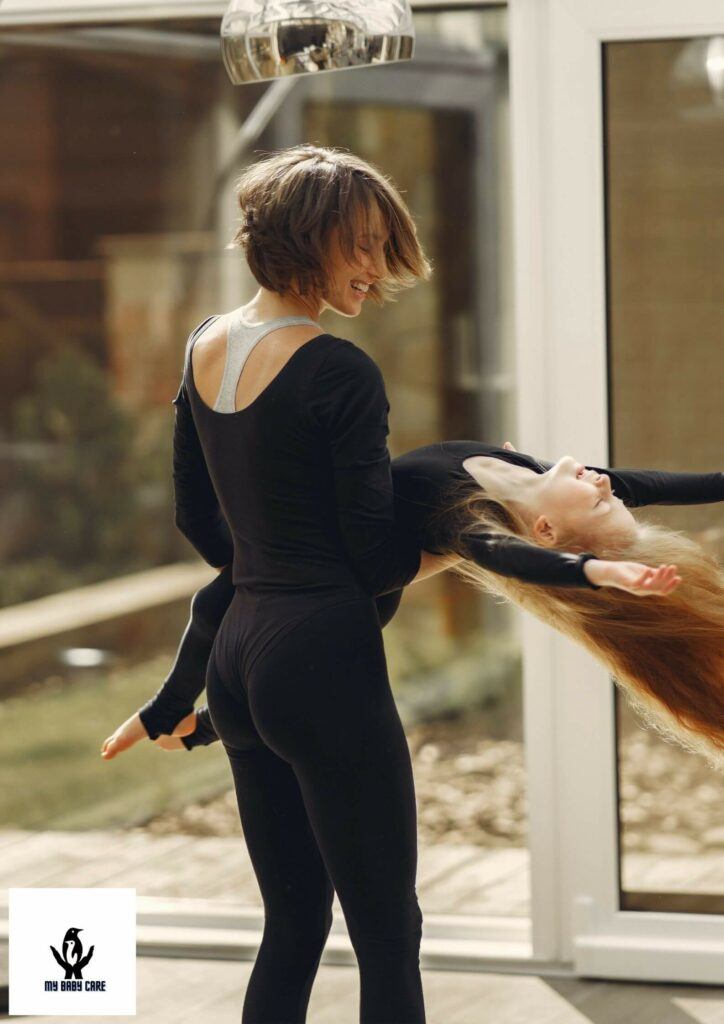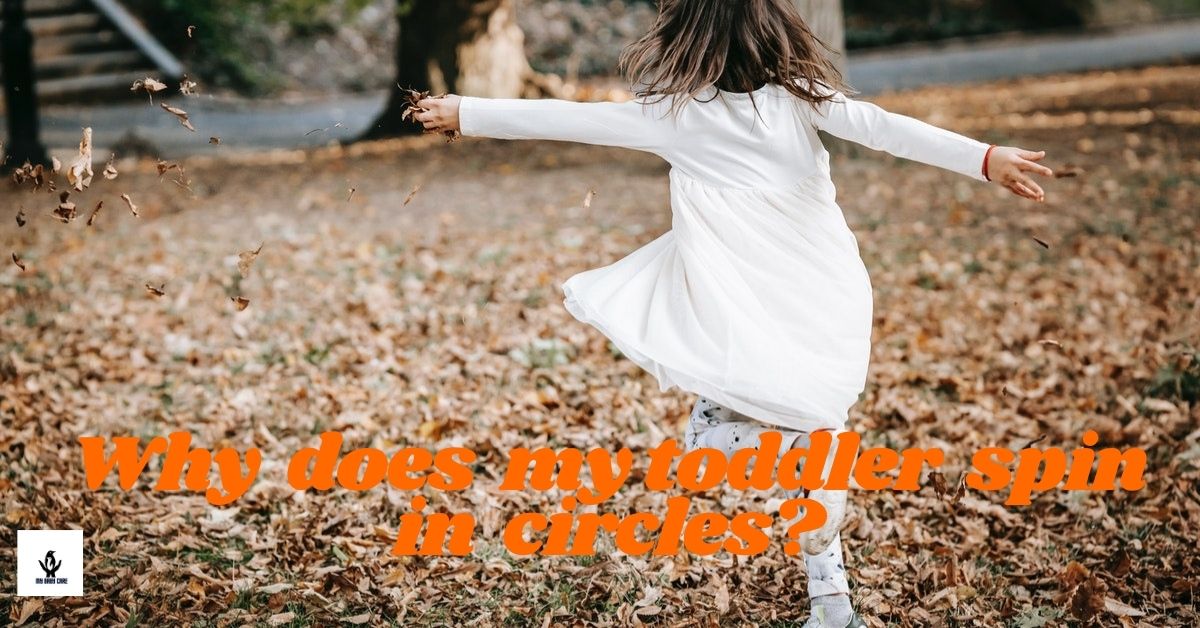Children do spinning, swinging, and rolling most of the time. Do most parents wonder whether, why does my toddler spin in circles?
They gain movement experience through that. They can organize their nervous system and make it more mature.
As an adult, you may dislike the feeling of spinning, but children fulfill their major sensory needs and motor skill improvement through spinning, swinging, and rolling.
Your kids can use both indoors and outdoors for swinging and spinning activities. The activity types are different in indoor and outdoor setups but you can get the same advantage from them.
Dear parents, you need to allow your kid’s big muscles to exercise, move, and work in many active ways.
It will indirectly help their emotional well-being after they can focus on their play activities very effectively.
Children love to master whatever skills they have. So once they start to spin, they will keep it until they get bored.
Spinning, rolling, and swinging are normal behavioral patterns of your kid. They fulfill various sensory needs through these activity types.
Excessive spinning or swinging may be suggestive of a medical condition such as autism where you need to confirm it through medical intervention.
Table of Contents
What does spinning do with your toddler?
The children need to take the sensory information through their sensory organs.
Mainly the vestibular, proprioceptive, auditory, and visual senses work together to take information and shape the kid’s brain and its networking throughout the body.
The child needs to get body awareness to function well in the day to day life. So spinning circles help them to gain a good sense of body awareness.
Then can figure out the “center of their body’ through spinning. It will help to coordinate their body movement on the two sides of the body.
Spinning actually helps to maintain the balance of the child and it helps to improve the concentration on classroom activities a lot. Also spinning is closely related to the vestibular system.
It controls a person’s balance, posture, gaze stabilization, and spatial awareness with orientation. Also, it impacts impulse control.
Eventually, the child is able to develop their nerve development through spinning activities. It will help to improve future tasks such as following a line across a page.
Professional people like occupational therapists create spinning or rocking experiences in child therapy if your child struggles with sensory integration.
Toddlers go in circles to improve their balance
If you need to go in circles for a long time, you need to maintain your balance. The same principle can apply to little kids as well. The more your toddler spins, the steadier he is on his legs.
For an adult to go in circles successfully, they should master their balance. The same goes for babies. The more a toddler spins, the steadier he is on his legs.
Falling when going in circles is a part of the fun. But if they keep their balance when going around the circles is the main aim.
As soon as a toddler learn to jump, then they learn to spin which can help to control their bodies.
Being able to maintain balance while spinning is achieving a developmental milestone in kids’ life.
Toddlers go in circles with spinning for fun

Children enjoy spinning so much. Because they need to concentrate on the spinning activity so much. They will do this same activity until more fun activity takes their attention.
To do effective spinning, children need to focus. No one can go in circles without focus. Most toddlers start to spin around their mother’s feet most of the time.
Try to identify that the child is seeking sensory stimulation through this activity. You should find another activity type to get the same sensory effect for your child instead of pushing him away.
When to be worried about too much spinning.
Most clinicians are stating that spinning is associated with the symptoms of autism. That is the main reason that parents worry too much when their babies start going in circles.
They try to stop their children from the games which include spinning sometimes. But as parents, you need to understand the early activities of your child contribute to their healthy growth a lot.
All children love to do repetitive activities So you can’t straightaway suspect that this is autism as soon as you see them going in circles.
Autistic kids are spinning much more than normal children. So they tend to keep it much longer than normal kids.
You need to screen the additional features such as rocking back and forth, twisting the body into an unusual position with flapping arms, etc. In such instances, you need to consult a doctor.
What you can do when your baby spins too much
Dear parents, I strongly suggest that you need to facilitate your kids to spin a little. It will provide sensory input for the kid. That sensory input will soothe them and make them calm a little.
So the best way is to create a space to roll, spin, and tumble comfortably.
There are a few associated activity types together with spinning. Those are rocking, going circles, jumping rounds with swinging. The toddlers crave stimulation through these activities.
Never try to discourage these activity types means you are preventing the natural organization and functions of your kid’s body.
But you need to supervise these activity times. Too many frequencies of these activities will harm your kids.
If you see too many spinning or going circles, try to convert those situations as games. You can learn your baby’s talents by doing this.
Creating a safe and responsible play area is your duty. Children concentrate on things they love so much. So facilitating them to do things is very ideal.
Some practical ways to spin, roll and swing in a play area
There are many types of equipment and materials that you can place inside the kid’s play area to modify their spinning activity more productive and effectively.
That will support your kid when they get started to swing as sensory seekers.
- fabric streamers
- Hammocks
- suspended rings or monkey bars-check design regulations with CPSC ( Consumer product safety commission )
- Tumbling mats
- Aerobic therapy balls
- Wedge mats
- Jump ropes
- Plastic or foam bats
- Jump ropes
- Rocking chairs
- Rocking boats
- Rocking horses
You can add these equipment types to your kid’s play areas and make an effective setup to facilitate the kid’s activities.
Design activity types that invite spinning, rolling and swinging
You can practice traditional games such as London bridge and pocket games which are filled with fun movements types. Also, you can use your creativity to design new games which address the most of sensory needs of your kids.
- Use a small bucket with a bit of water in it. Ask your lid to hold it and go around in circles. By that, you can experiment with the centrifugal force of your kid. Also, you can let your kid spin with a kite or windsock.
- Practice and encourage your children to sway in the wind. you can design dancing activities for this.
- Pretend to be a caterpillar or a snowball.
- Butterfly games – you can decorate your kids as butterflies with elastic and fabric materials and ask them to “fly” around the play yard. You can create a wonderful fantasy world in which your kids love to dance and swirl
- clock game
- Roly-poly derby- Ask your kids to sit on the ground and wrap their arms around their legs forming a body ball. After you can ask them to roll toward a preset finish line. Allow occasional collisions along the way.
Make sure to give more attention to your kid if they have sensory processing issues.
Final thoughts
The spinning of your child is a normal activity type most of the time. It is accompanied by swinging and rolling. These activities help your kid to design a mature nervous system for your kids.
Children fulfill their sensory needs through spinning activities. When you see excessive spinning within the daily behavioral patterns that may be an indication of a medical condition where you need medical attention for further clarification.
You never try to stop your kid’s spinning. It may be the way that they fulfill their sensory requirement which can help to calm their body. Also, parents can introduce spinning into the kid’s play areas and get much more benefits.
So spinning is a common behavioral type of your kid most of the time and it is your duty to use that activity type into an effective pathway for your kid.

